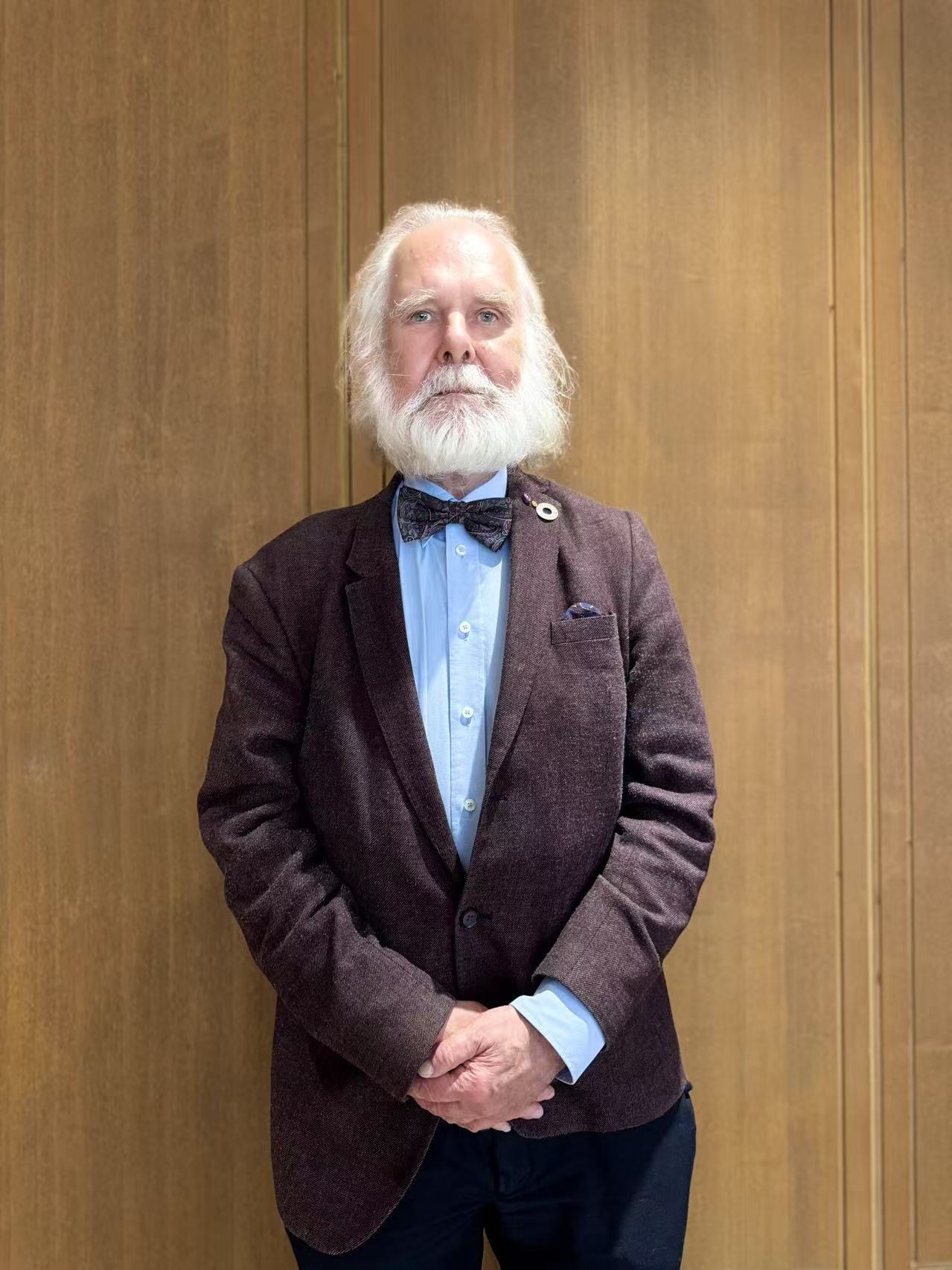尼尔斯·斯坦塞斯(Nils Christian Stenseth)教授是挪威著名科学家,曾任挪威科学院院长,其研究兴趣涵盖生态学和进化科学的广泛领域。三十多年来,他一直与多个中国机构密切合作,先后获得中华人民共和国国际科学技术合作奖、中国政府友谊奖。
作为中国科学院外籍院士,他在近日中国科学院学部举办的“可持续发展与开放合作:科学共同体的责任”国际研讨会上接受《中国科学报》采访时表示:“投资好奇心驱动的基础研究将使中国和世界受益。”
 Nils Christian Stenseth。冯丽妃摄
Nils Christian Stenseth。冯丽妃摄
?
《中国科学报》:你与中国同行开展了哪些合作?取得了哪些突破?
斯坦塞斯:我与中国多家科研机构都开展了合作,包括中国科学院动物研究所、北京师范大学、清华大学,最近与清华大学万科公共卫生与健康学院开展合作较多,这段合作卓有成效。在贡献专业知识的同时,我也从中国同事身上获益良多。与我合作的团队实力非常雄厚,拥有一批能力出众的年轻学者,我非常珍视与他们的协作。
我们的研究聚焦于解析气候变化如何影响各种生态系统,包括疫病传播。我们还特别研究了气候变化对引发黑死病的病原体——鼠疫传播的影响。我们的长期跨学科研究非常成功,提出了诸多创新性的见解,已在国际顶级期刊发表。多种啮齿动物是鼠疫的宿主,其中旱獭是关键宿主之一。事实上,我将与中国疾控中心的科学家进行西藏旱獭的遗传学研究,希望揭示鼠疫传播的分子机制。
《中国科学报》:你认为中挪可在哪些领域深化科学合作?
斯坦塞斯:除当前聚焦的鼠疫等人兽共患病研究外,合作应拓展至其他传染病领域。此外,深入探究气候变化对生态系统的威胁具有重要潜力。中国丰富的历史数据为重构过去生态动态、预测未来风险提供了宝贵基准。
全球青年科学家都应积极参与国际研究交流。各国具有独特的科学传统,融入多元学术环境可拓宽研究方法论视野。资深学者需积极支持青年学者赴海外交流。今年秋季,我将在奥斯陆接待数位中国学生,推动此类合作。
《中国科学报》:你对中国科技发展有何印象?对中国应优先支持哪些科学领域有何建议?
斯坦塞斯:中国正在通过充分的投入支持基础科学发展。与许多国家一样,中国将创新驱动发展作为优先事项,更重要的是,中国同样支持好奇心驱动的基础研究——这是创新的根基。这种双重关注对促进科技事业的长期发展至关重要。我的建议是,继续确保对好奇心驱动的基础研究的投入——这将惠及中国乃至世界。
CAS Foreign Member Nils Chr. Stenseth:
Investing into Curiosity-driven Basic Solid Research Will Benefit China and The world
Prof. Nils Chr-Stenseth is a world-renowned Norwegian scientist whose research interests span a broad spectrum of ecological and evolutionary sciences. For over three decades, Stenseth has been closely collaborating with many Chinese institutions. He has received the International Science and Technology Cooperation Award of China and the Chinese Government Friendship Award.
As a Foreign member of the Chinese Academy of Sciences (CAS), Stenseth told China Science Daily at the 70th Anniversary of the founding of the Academic Divisions of CAS: “Investing money into curiosity-driven basic solid research will benefit China and the world. ”
CSD: What is your cooperation with Chinese counterparts, and what breakthroughs have you made?
Stenseth: I have collaborated with multiple institutions in China, beginning with Institute f Zoloology at CAS in Beijing, Beijing Normal University and most recently with Tsinghua University. My primary current partnership is with the Vanke School of Public Health, Tsinghua University. This collaboration has been extraordinarily fruitful. While I have contributed expertise, I have learned much from my Chinese colleagues. The Vanke group I’m collaborating with is a very, very strong group, which has very clever young people. And I appreciate it very much and have benefitted much from them.
Our research has focused on understanding how climate variation impacts diverse ecological systems, including disease transmission networks. We have specifically studied how climate change influences plague—the pathogen responsible for the Black Death. Our findings indicate that due to current climate trends, in the northern part of China, there will likely to be more plague cases, whereas in the southern part there is likely to be less, which is consistent with what we observe. Because up north is where we see the plague in humen. Here, the human plague infection is not many, but a few every year. Whereas in the southern part there is none. So, our cross-disciplinary studies on plague through ages has been very, very successful. We have produced a lot of new insights being published in very good journals.
Several rodent species act as disease reservoirs, but marmotes (Marmota spp.) are amont the critical host species. In fact, I plan to discuss ongoing genetic studies on marmots in Tibet with colleagues from China’s CDC tomorrow, aiming to unravel molecular mechanisms underlying plague transmission.
CSD: In which fields do you believe Sino-Norwegian scientific cooperation can deepen in the future?
Stenseth: Beyond our current focus on zoonotic diseases—with plague as a primary case study—we should expand to other infectious diseases. Additionally, there is great potential in advancing our understanding of how climate variation and long-term climate change threaten ecological systems. China’s extensive historical data provide invaluable baselines for reconstructing past ecological dynamics and predicting future risks.
CSD: As a veteran of cross-disciplinary international collaboration, what advice would you give to young researchers?
Stenseth: I believe it is essential for young scientists—including those in China—to engage in international research exchanges. Each country has unique scientific traditions, and immersing oneself in diverse academic environments broadens perspectives on research methodologies. Senior researchers must actively support young scholars in pursuing overseas experiences. This fall, I will host several Chinese student in Oslo to foster such collaborations.
CSD: What is your impression of China’s science and technology development? Looking ahead 5–10 years, which emerging fields should China prioritize to drive technological breakthroughs?
Stenseth: I think you are supporting basic science with good investment. Like many nations, it is prioritizing innovation-driven growth, but importantly, it also supports curiosity-driven basic research – which is essential for innovation. This dual focus is critical for sustaining long-term scientific progress. I think my advice would be make sure that the country is investing money into curiosity-driven basic solid research, that will benefit China and the world.